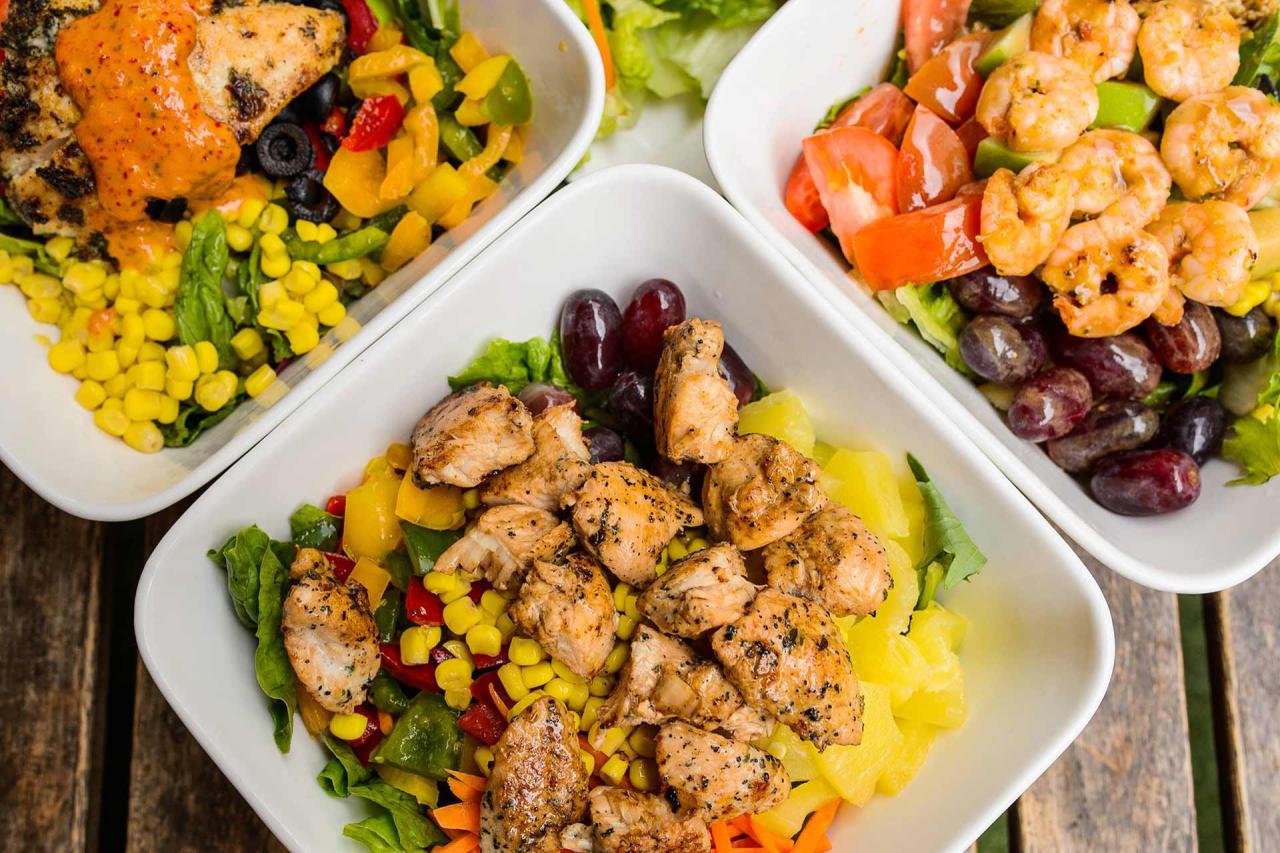Elevate Your Meals with Perilla Leaf: Tips for Creating Delicious Dishes takes center stage, inviting you to explore the world of this unique herb. Perilla leaf, often called shiso, is a versatile ingredient with a distinctive flavor profile that adds a touch of intrigue to any culinary creation.
Its vibrant green leaves possess a refreshing, minty aroma with hints of citrus and spice, making it a delightful addition to both traditional and modern dishes. Beyond its culinary appeal, perilla leaf boasts a wealth of nutritional benefits, packed with antioxidants and potential health advantages.
This article delves into the fascinating world of perilla leaf, providing a comprehensive guide to its use in the kitchen. From understanding its flavor profile and nutritional value to exploring culinary applications and pairing suggestions, we’ll equip you with the knowledge to elevate your meals with this remarkable ingredient.
Introduction to Perilla Leaf
Perilla leaf, also known as shiso, is a unique and versatile herb that adds a distinctive flavor and aroma to various cuisines. It’s a member of the mint family and is native to East Asia, where it has been cultivated for centuries.
Perilla leaf boasts a complex flavor profile that combines elements of mint, basil, and citrus, with a hint of spice. This unique blend makes it a captivating addition to dishes, adding depth and complexity to both sweet and savory preparations.
Nutritional Benefits of Perilla Leaf
Perilla leaf is not only delicious but also a nutritional powerhouse. It’s packed with antioxidants, which are compounds that help protect your cells from damage caused by free radicals.
- High in Antioxidants:Perilla leaf is an excellent source of antioxidants, including rosmarinic acid, caffeic acid, and quercetin. These antioxidants have been linked to various health benefits, such as reducing inflammation, protecting against heart disease, and boosting the immune system.
- Rich in Omega-3 Fatty Acids:Perilla leaf is also a good source of alpha-linolenic acid (ALA), an omega-3 fatty acid that plays a crucial role in brain health, heart health, and reducing inflammation.
- Other Nutrients:Perilla leaf is also a good source of vitamins A, C, and K, as well as minerals like calcium, iron, and potassium.
Culinary History and Use of Perilla Leaf
Perilla leaf has a long and rich history in Asian cuisine, particularly in Japan, Korea, and China. It’s been used in traditional medicine for centuries and is valued for its culinary versatility.
- Japan:In Japan, perilla leaf is known as “shiso” and is widely used in various dishes, including sushi, tempura, and pickles. It’s also used as a garnish and a flavoring agent in sauces and soups.
- Korea:In Korea, perilla leaf is called “kkaennip” and is commonly used in kimchi, a traditional fermented cabbage dish. It’s also used in salads, soups, and stews.
- China:In China, perilla leaf is known as “zi su” and is used in stir-fries, dumplings, and other dishes. It’s also used in traditional Chinese medicine for its purported health benefits.
Culinary Applications of Perilla Leaf

Perilla leaf, with its distinct aroma and flavor, adds a unique dimension to a wide range of culinary creations. Its versatility allows it to be incorporated into various dishes, from traditional Asian cuisine to modern culinary innovations.
Traditional Dishes Featuring Perilla Leaf
Perilla leaf has long been a staple ingredient in East Asian cuisine, particularly in Korean, Japanese, and Chinese cooking. It is used in various dishes, showcasing its diverse flavor profile.
- Korean Cuisine:In Korea, perilla leaf is commonly used in dishes like bibimbap(mixed rice with vegetables), japchae(glass noodles with vegetables), and kimchi(fermented cabbage). Its unique flavor and aroma complement the spicy and savory notes of these dishes.
- Japanese Cuisine:In Japan, perilla leaf is known as shisoand is widely used in dishes like temaki(hand-rolled sushi), yakitori(grilled skewers), and shiso-maki(perilla leaf rolls). Its refreshing flavor and aroma are often paired with fish and seafood.
- Chinese Cuisine:In China, perilla leaf is called zi suand is commonly used in dishes like mapo tofu(tofu in spicy sauce) and stir-fried vegetables. Its unique aroma and flavor add a distinct note to these dishes.
Incorporating Perilla Leaf into Modern Cuisine
Perilla leaf can be seamlessly integrated into modern culinary creations, adding a unique touch to both savory and sweet dishes. Its versatility allows it to be used in various ways, from garnishes to main ingredients.
- Salads:Perilla leaf can be used as a garnish or added to salads for its unique flavor and aroma. Its peppery and slightly citrusy notes complement a variety of salad dressings and ingredients.
- Stir-fries:Perilla leaf can be added to stir-fries for its unique flavor and aroma. Its peppery and slightly citrusy notes complement a variety of stir-fry sauces and ingredients.
- Soups:Perilla leaf can be added to soups for its unique flavor and aroma. Its peppery and slightly citrusy notes complement a variety of soup broths and ingredients.
- Marinades:Perilla leaf can be used in marinades for its unique flavor and aroma. Its peppery and slightly citrusy notes complement a variety of meats and seafood.
- Pastries and Desserts:Perilla leaf can be used in pastries and desserts for its unique flavor and aroma. Its peppery and slightly citrusy notes complement a variety of sweet flavors.
“Perilla leaf is a versatile ingredient that can be used in a variety of dishes. Its unique flavor and aroma can add a touch of sophistication to any meal.”
[Source
Name of the Source]
Tips for Using Perilla Leaf in Cooking

Perilla leaves, with their unique flavor and versatility, can elevate your culinary creations to new heights. Understanding how to select, store, and prepare them is key to unlocking their full potential. This section provides practical tips and techniques for using perilla leaves in your cooking.
Selecting Fresh Perilla Leaves
Choosing fresh, high-quality perilla leaves is crucial for achieving the best flavor and aroma in your dishes. Here’s how to select the best leaves:
- Look for vibrant green leaves:Perilla leaves should be a deep, vibrant green, indicating freshness. Avoid leaves that are yellowed, wilted, or have brown spots.
- Check for firmness:The leaves should feel firm and crisp to the touch. Avoid leaves that are soft or limp, as this may indicate they are past their prime.
- Inspect for blemishes:Carefully inspect the leaves for any signs of damage or insects. Choose leaves that are free from holes, tears, or other imperfections.
Storing Perilla Leaves
Proper storage is essential for preserving the freshness and flavor of perilla leaves. Here are some effective methods:
- Refrigeration:Wrap the leaves loosely in a damp paper towel and store them in a plastic bag in the refrigerator. This method can keep the leaves fresh for up to a week.
- Freezing:To freeze perilla leaves, blanch them briefly in boiling water, then shock them in ice water. Pat them dry and store them in a freezer-safe bag. Frozen perilla leaves can be used in stir-fries, soups, and other dishes.
Preparing Perilla Leaves
Perilla leaves can be used in various ways, depending on the dish you’re preparing. Here are some common methods:
- Chopping:Chop perilla leaves finely to add their flavor and aroma to stir-fries, salads, and other dishes. They can also be used as a garnish.
- Grilling:Grill perilla leaves for a smoky flavor. They can be grilled whole or sliced, and served as a side dish or incorporated into salads.
- Drying:Dry perilla leaves to make a powder that can be used as a seasoning or flavoring agent in various dishes.
Recipes Featuring Perilla Leaf
Perilla leaf, with its unique flavor and versatility, can be incorporated into a variety of dishes, adding a distinct touch to both savory and refreshing culinary creations.
Perilla leaf, with its vibrant green hue and unique flavor, adds a touch of autumnal charm to your culinary creations. While its earthy aroma and refreshing taste are a welcome addition to salads and stir-fries, its versatility extends beyond the kitchen.
If you’re looking to bring the warmth of fall into your home, consider incorporating perilla leaves into your décor. For inspiration on crafting a stunning autumnal display, check out this guide on how to design a stunning autumn leaf garland , which will help you create a cozy and inviting atmosphere.
Just like the vibrant hues of autumn leaves, perilla leaf adds a touch of warmth and vibrancy to your meals, making them both delicious and visually appealing.
Refreshing Perilla Leaf Salad
Perilla leaf salads are a delightful way to showcase the herb’s vibrant flavor and refreshing qualities. This recipe features a simple yet flavorful dressing that complements the perilla’s subtle minty notes.
Ingredients:
- 1 cup perilla leaves, washed and drained
- 1/2 cup thinly sliced cucumber
- 1/4 cup thinly sliced red onion
- 1 tablespoon sesame oil
- 1 tablespoon rice vinegar
- 1 teaspoon soy sauce
- 1/2 teaspoon sugar
- Pinch of red pepper flakes (optional)
Instructions:
- In a large bowl, combine the perilla leaves, cucumber, and red onion.
- In a small bowl, whisk together the sesame oil, rice vinegar, soy sauce, sugar, and red pepper flakes (if using).
- Pour the dressing over the salad and toss to coat.
- Serve immediately.
Flavorful Perilla Leaf Stir-Fry
Perilla leaf’s ability to add depth and complexity to savory dishes is showcased in this stir-fry recipe. The combination of perilla, garlic, and ginger creates a fragrant and flavorful base for a variety of vegetables and protein.
Elevate your meals with perilla leaf, a versatile herb that adds a unique flavor profile to your dishes. From its vibrant green hue to its aromatic, slightly minty taste, perilla leaf can be used in a variety of culinary applications.
Learn more about the versatility of this unique herb and its potential to transform your cooking by exploring Perilla Leaf Magic: How to Enhance Your Cooking with This Unique Herb. Whether you’re adding it to salads, stir-fries, or even incorporating it into marinades, perilla leaf is sure to become a staple in your kitchen, adding a touch of magic to your meals.
Ingredients:
- 1 tablespoon vegetable oil
- 2 cloves garlic, minced
- 1 inch ginger, minced
- 1 cup sliced shiitake mushrooms
- 1 cup sliced bell pepper
- 1/2 cup sliced carrots
- 1/2 cup perilla leaves, roughly chopped
- 1/4 cup soy sauce
- 1 tablespoon rice vinegar
- 1 teaspoon sesame oil
- 1/2 teaspoon sugar
- Pinch of red pepper flakes (optional)
Instructions:
- Heat the vegetable oil in a large wok or skillet over medium heat.
- Add the garlic and ginger and cook for 30 seconds, until fragrant.
- Add the mushrooms, bell pepper, and carrots and cook for 5 minutes, until softened.
- Stir in the perilla leaves, soy sauce, rice vinegar, sesame oil, sugar, and red pepper flakes (if using).
- Cook for 1 minute, until the perilla leaves are wilted.
- Serve hot over rice or noodles.
Perilla Leaf Soup, Elevate Your Meals with Perilla Leaf: Tips for Creating Delicious Dishes
Perilla leaf adds a unique and aromatic depth to broths, creating a flavorful and complex soup base. This recipe uses a simple vegetable broth and showcases the herb’s ability to enhance the overall taste of the soup.
Ingredients:
- 4 cups vegetable broth
- 1/2 cup perilla leaves, roughly chopped
- 1/4 cup chopped scallions
- 1 tablespoon soy sauce
- 1 teaspoon sesame oil
- 1/2 teaspoon sugar
- Pinch of red pepper flakes (optional)
Instructions:
- In a large pot, bring the vegetable broth to a boil over medium heat.
- Reduce heat to low and simmer for 5 minutes.
- Add the perilla leaves, scallions, soy sauce, sesame oil, sugar, and red pepper flakes (if using).
- Simmer for 5 minutes, until the perilla leaves are wilted.
- Serve hot.
Perilla Leaf and its Culinary Pairings
Perilla leaf, with its unique flavor profile, offers a range of possibilities for enhancing dishes and creating harmonious flavor combinations. Its versatility allows it to be incorporated into various cuisines, from Asian dishes to Western recipes. The key to successful pairings lies in understanding the complementary flavors and textures that perilla leaf brings to the table.
Flavor Profiles and Complementary Pairings
Perilla leaf possesses a distinctive flavor profile that can be described as a blend of minty, citrusy, and slightly spicy notes. Its aromatic nature lends itself well to pairings with ingredients that complement these flavors.
- Seafood:The refreshing, minty notes of perilla leaf beautifully complement the delicate flavors of seafood, such as salmon, tuna, and shellfish. It can be used as a garnish, incorporated into sauces, or even wrapped around fish for grilling or steaming.
- Meat:Perilla leaf can add a unique twist to meat dishes, particularly grilled or roasted meats. Its minty and citrusy notes cut through the richness of the meat, while its subtle spice adds another layer of complexity.
- Vegetables:Perilla leaf’s versatility extends to vegetables, where it can be used to create vibrant and flavorful combinations. It pairs well with grilled or stir-fried vegetables, such as eggplant, zucchini, and bell peppers.
- Rice and Noodles:The refreshing and slightly spicy notes of perilla leaf can elevate the flavor of rice and noodle dishes. It can be added to stir-fries, salads, or even used as a garnish for a final touch of freshness.
- Salads and Dressings:Perilla leaf’s aromatic qualities make it an excellent addition to salads and dressings. It can be used as a garnish, chopped into the salad, or even infused into a vinaigrette for a unique flavor twist.
Dishes Where Perilla Leaf Enhances Flavor
Perilla leaf’s versatility allows it to enhance the overall flavor profile of a wide range of dishes.
- Sushi:Perilla leaf is a staple ingredient in Japanese cuisine, particularly sushi. Its refreshing flavor cuts through the richness of the rice and fish, providing a balanced and harmonious experience.
- Korean BBQ:In Korean cuisine, perilla leaf is often served alongside grilled meats as a wrap for enhancing the flavor and adding a refreshing element.
- Thai Curry:Perilla leaf’s minty and citrusy notes can add a unique dimension to Thai curries, particularly green curries, where it complements the coconut milk and aromatic spices.
- Vietnamese Spring Rolls:Perilla leaf is commonly used in Vietnamese spring rolls, where its refreshing flavor balances the richness of the fillings and adds a vibrant touch.
- Japanese Salad:Perilla leaf is a popular ingredient in Japanese salads, where its unique flavor and texture add a refreshing element to the overall dish.
Final Wrap-Up: Elevate Your Meals With Perilla Leaf: Tips For Creating Delicious Dishes
With its unique flavor, versatility, and nutritional benefits, perilla leaf is an exciting addition to any culinary repertoire. Whether you’re a seasoned chef or a home cook seeking new flavor adventures, incorporating perilla leaf into your dishes can elevate your culinary creations to new heights.
From refreshing salads to flavorful stir-fries and aromatic soups, the possibilities are endless. Embrace the vibrant world of perilla leaf and discover the magic it can bring to your meals.
Essential Questionnaire
What does perilla leaf taste like?
Perilla leaf has a unique flavor profile that combines a refreshing minty aroma with hints of citrus and spice. It can be described as a blend of basil, mint, and a touch of ginger.
Where can I find perilla leaf?
Perilla leaf can be found at Asian grocery stores, specialty markets, and some well-stocked supermarkets. You can also find it online from various retailers.
How long does perilla leaf last?
Fresh perilla leaves can last for about a week in the refrigerator if stored properly. Wrap them in a damp paper towel and place them in an airtight container.
